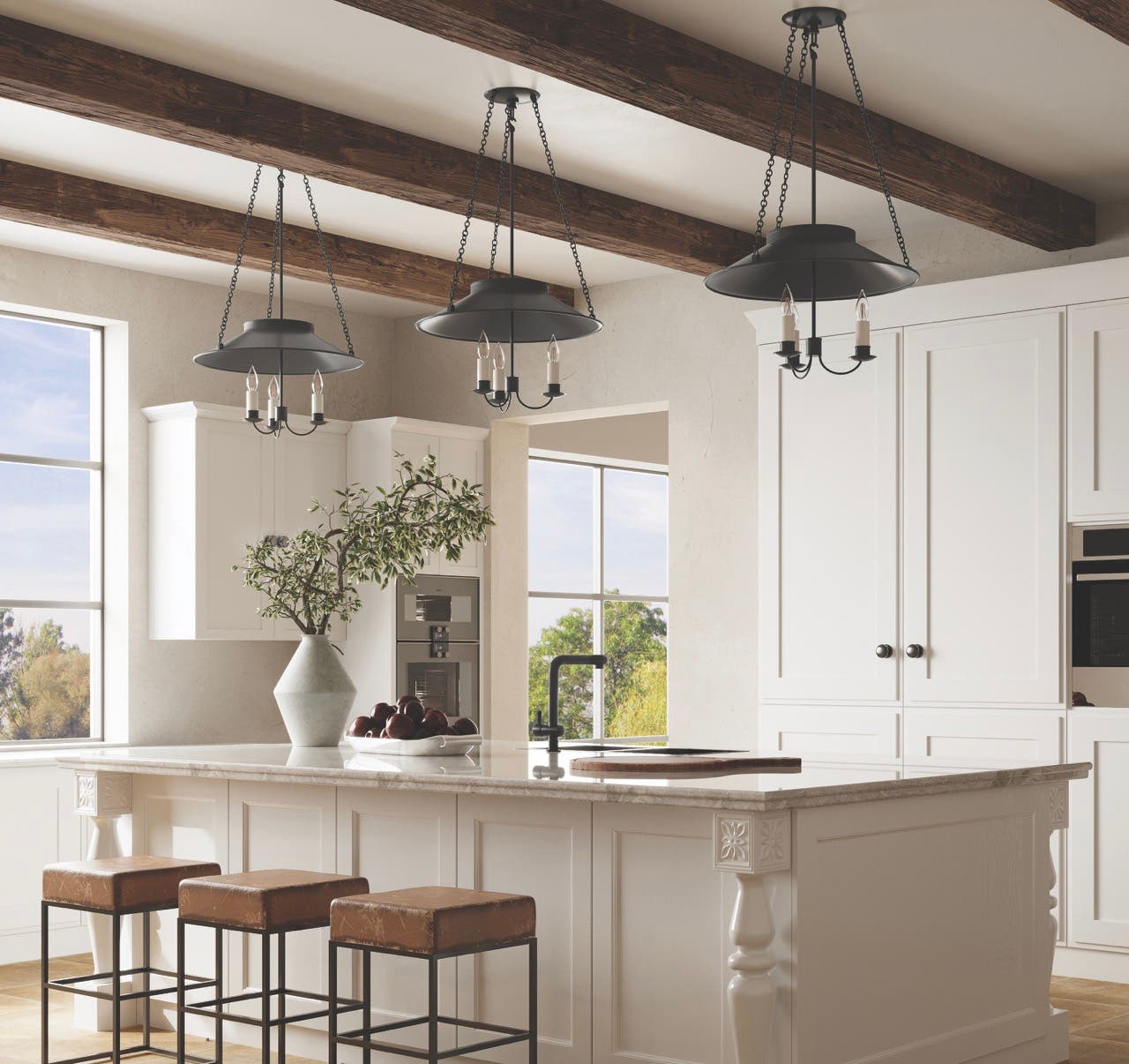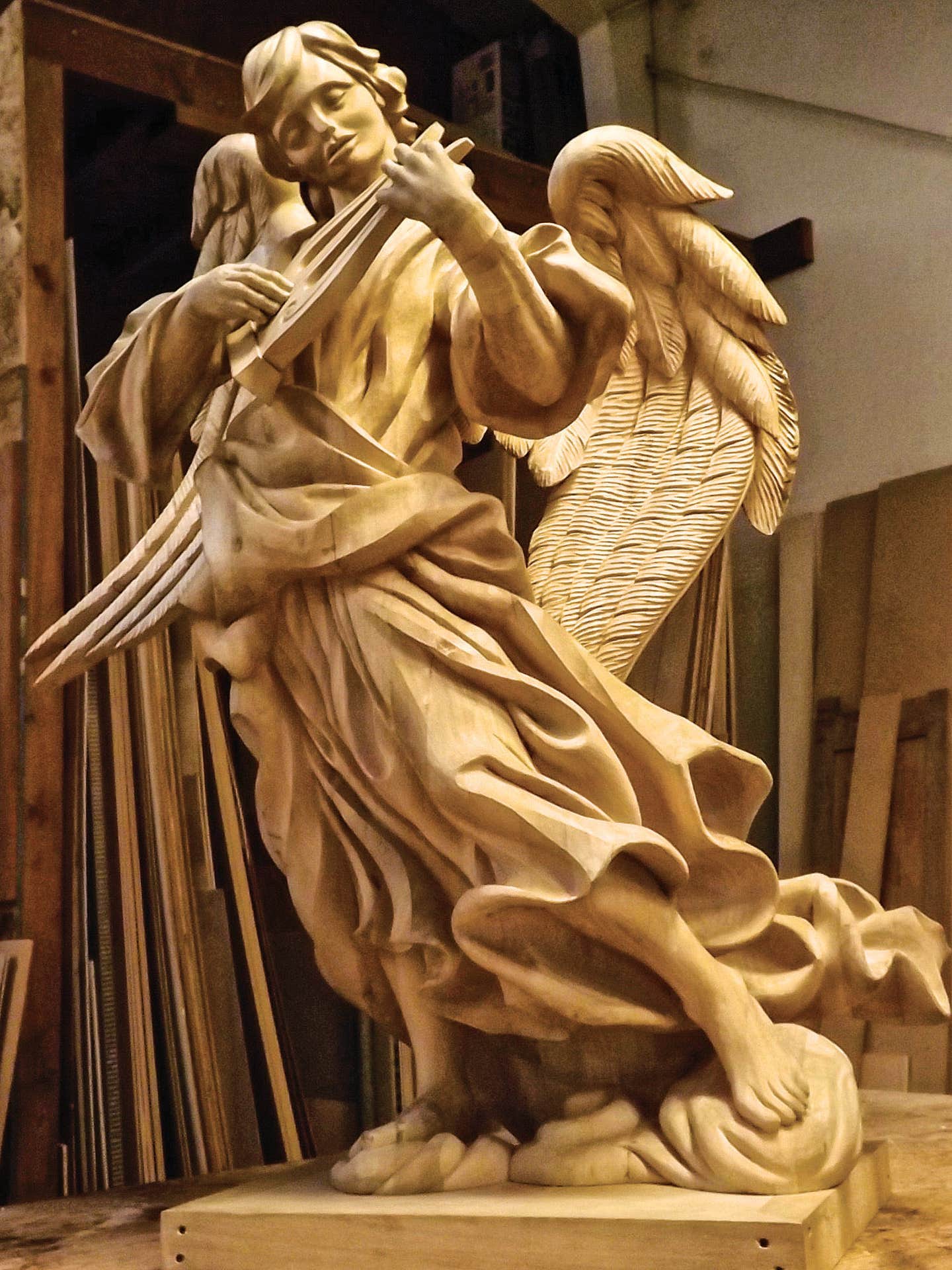
Product Reports
Woodwork for Religious Buildings
We asked several woodcarvers and woodworkers to tell us all the details about their favorite ecclesiastical projects. Here’s what they said.
Master carver Ian Agrell started carving in 1961 and opened his full-service, family-run office, Agrell Architectural Carving, in 1978. The firm now has offices in San Rafael, CA, and the UK, and 25 employees, including his daughter, Kate, who is the project manager, and Master Carver Adam Thorpe, who serves as a design consultant. It specializes in large architectural carving projects, millwork and organ cases.
“Over the last four decades, we have worked on a number of cathedrals and churches in the UK and the USA,” says Ian Agrell. “The two big standouts were the Cathedral of the Madeleine in Salt Lake City, Utah, where we worked with Beyer Blinder Belle on the new screen and tabernacle and redesigning the confessionals, and the Cathedral of St. Paul in St. Paul, Minnesota, where we worked with Architect Duncan Stroik and his team on the new organ case inspired by the original one designed by Beaux-Arts Architect Emmanuel Louis Masqueray.”
He adds: “The Madeleine Cathedral was our first big project in the USA, and the big challenge was being a liaison with the team on the ground and collaborating with the electricians and other trades to prepare the site for the installation of the work.”
One project that was a big challenge was at St. Paul’s, where the massive size of the organ case—60 feet wide, 20 feet deep and 40 feet high—meant that Agrell had to work out a way to construct the sections so they could be lifted up 30 feet to the platform and installed in a tight space. “With help from a local scaffolding firm and being sailors from the San Francisco Bay Area, we used our skills and knowledge of rigging and winches to lift and turn these large elements,” says Agrell.
“Then, of course, there was the throne that we made for the 1993 visit of His Holiness Pope Saint John Paul II to Denver, Colorado,” notes Agrell. “We worked with Denver Architect David Tryba. He visualized a seat that combined the Rocky Mountains with images from the State of Colorado. Although it was simple in design and execution, it was, of course, a great honor because it’s not often that you get to make a chair for a saint.”
Enkeboll Designs, in Carson, CA, was established in the 1950s as a furniture manufacturer. The family-owned business shifted to architectural wood carvings in the mid-1980s and the company now offers more than 1,000 solid-wood, machine-carved architectural components, from corbels to mantels to moldings and appliques, in a variety of wood species.
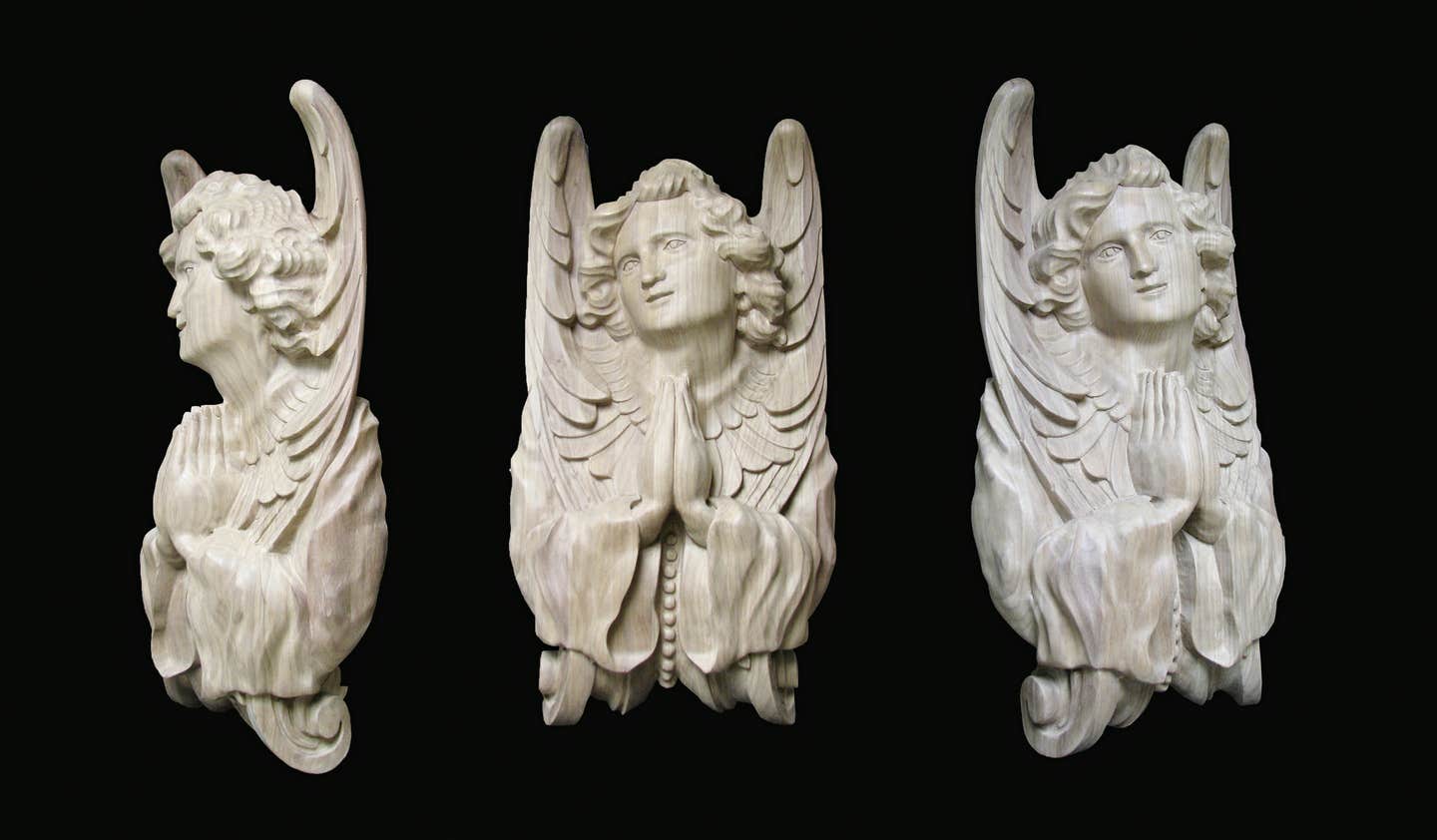

The firm also does custom work. It has supplied components to a variety of churches, including Latter-Day Saints temples in Fiji, Utah, Peru and Rome and various Roman Catholic and Protestant churches across the United States.
“Because we sell components and not finished products, we do not always get to see how they are used,” says Rosanna Vaughn, Enkeboll Designs marketing manager. “We don’t make furniture either, but some of our pieces have ended up as arms and side pieces for pews. Sometimes, people use our pieces in ways we never thought of or ask us to modify them for custom projects. For instance, we have an angel in our line that is made to be used at the end of a column or a mantel base. A church asked us to add praying hands to it for a different application, and it is simply beautiful.”
She adds: “I really loved the custom cross we recently made in mahogany for The Walk to Emmaus. The bottom is Jesus’ intertwined hands that morph into a traditional cross. It’s about three feet tall and is meant to be carried in public processions. We decided to gift it to the walk and hope it will be used for years to come.”
Another firm, Heritage Restoration and Design of Peoria, IL, is a 200-year-old family design-restoration-preservation business that applies old-world knowledge and techniques, which have been passed down through its six generations, to its projects. The 12 members of the production team hand-carve and hand-tool church furniture, millwork and moldings. The company also makes marble statuary and marble furniture and stained-glass windows. It does plaster restoration, painting, marbleizing, wood graining, gold detailing and creates decorative molding, custom canvas murals and wall mosaics.
“A large percent of our projects is in church work,” says Michael Berlinger, president, CEO and chief conservator at Heritage Restoration and Design, “but there are two projects that stand out in my mind. About a dozen years ago, we were asked to duplicate a wooden railing for the altar area at the Cathedral of St. Mary in Fargo, North Dakota. The original railing had been gone for a long time, and they wanted it to match the bannister style around the choir loft so everything blended in with the architecture.”
The wood species was white oak and the design was in the Roman arch style, and individual pieces had to be assembled by hand. It was about 40 feet across, and there were 10 individual wood pieces in every foot. It was made more difficult by the fact that the rail system was interrupted by the pulpit. “We built it over a five-week period. It took another two weeks to finish and two more weeks to install,” says Berlinger.
He adds that the firm has recently completed work at Frank Lloyd Wright’s Unity Temple in Oak Park, IL. “We just finished a two-year project stripping and refinishing all the woodwork, doors, moldings, pews, wooden chandeliers and wooden wall sconces at the temple,” he says.
“The temple dates to 1908 and it was his first commercial building and our first time to work on one of his buildings,” Berlinger adds. “The project also included the classrooms and offices that were in the same building. Everything was taken apart and tagged. There were thousands of pieces, including 40 to 50 doors, and the Unity Temple foundation members suggested there are about 10 miles of moldings in the complex.”
“The idea was to make it look like it did when it opened. The wood had been mounted onto the concrete walls. It had absorbed moisture, and it had spots of white efflorescence powder from absorbing the chemicals in the concrete,” Berlinger explains. “We had to hand clean it with proprietary chemical mixtures we had created that would not harm the woods, which were red and white oak. We used a four-component neutralizer that we put on and wiped off. Some of the pieces had turned black, and we had to duplicate them right down to matching wood grain. We looked through a lot of piles of wood to get the exact matches. We used 37 different colors of stains on this project in order to maintain a uniform color range.”
“The doors were challenging,” he adds. “They required Dutchman repairs because the holes of the new locksets and hardware did not match the old, so we had to replace the face panels with ones that had the exact color and grain pattern as the originals and fill in the hollow pockets. This is difficult to do on clear finished wood. There are not many companies that do this kind of work anymore.”
“This project is exactly the type we love to do because it’s complex, it’s historic and it’s preserving the church for the next generation,” Berlinger points out.
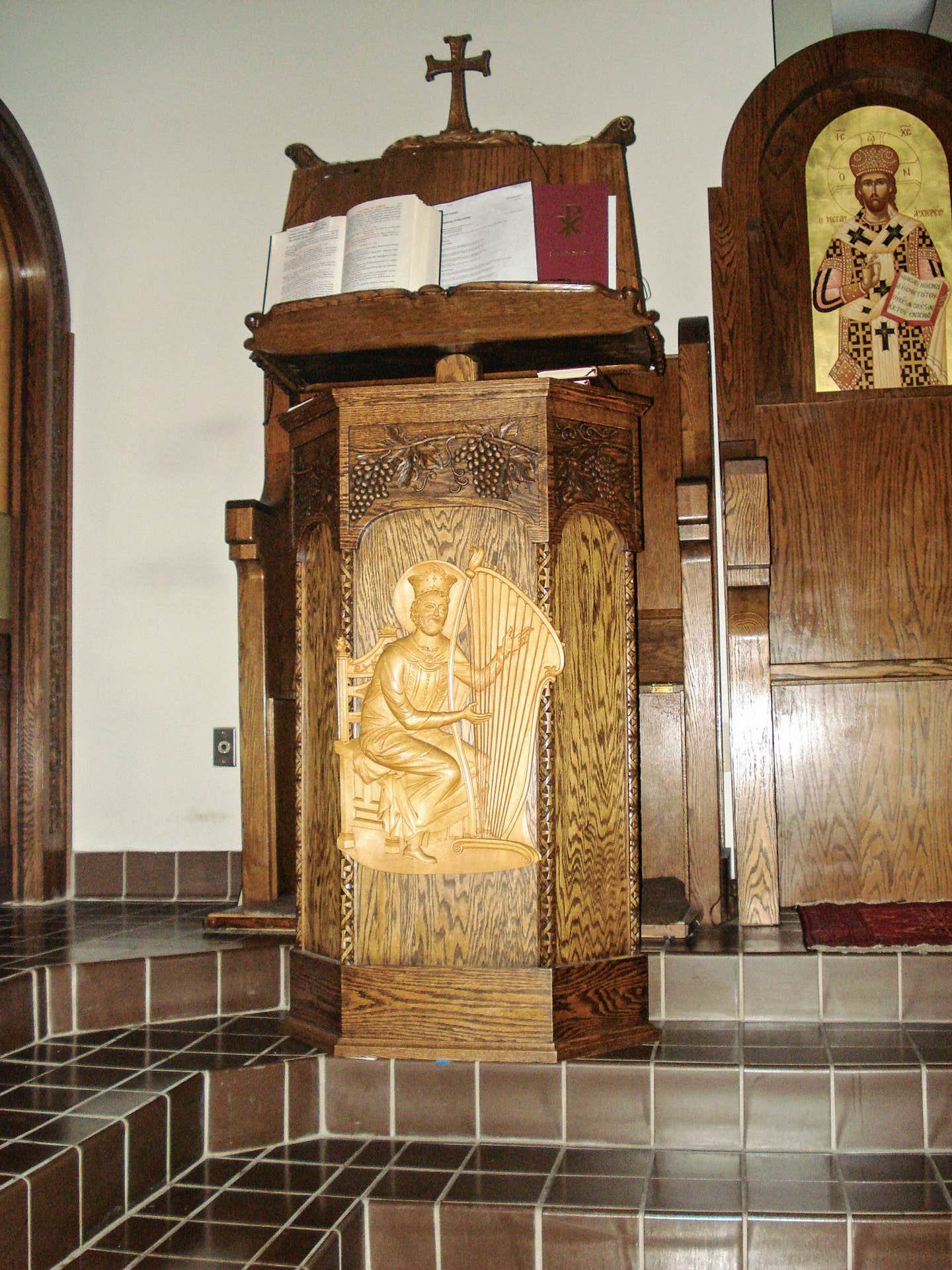
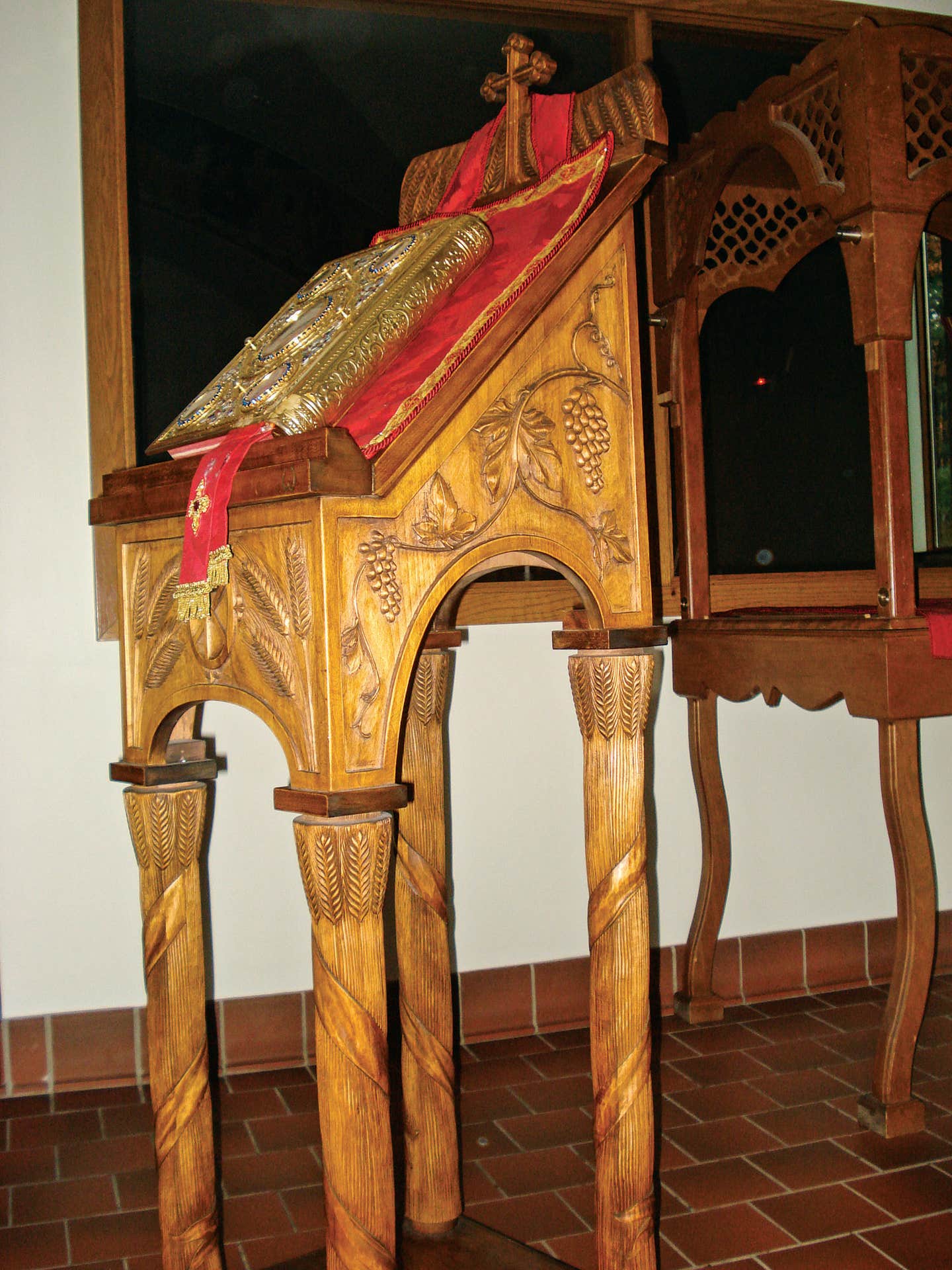
Dimitrios Klitsas, Fine Wood Sculptor, of Hampden, MA, consists of Dimitrios Klitsas and his son, Spiro. They specialize in hand-carved furniture and every type and style of architectural ornament.
“I learned how to carve in Greece,” says Dimitrios Klitsas, “where we used the traditional Byzantine style in churches. I love that style, but I’m open to any style, because if it’s well done, it’s art. I’ve done a lot in the Gothic style, and I’ve worked on Roman Catholic and Protestant churches.”
“I’m particularly proud of the work I’ve done for St. Luke’s Greek Orthodox Church in East Longmeadow, Massachusetts because that’s where I worship. I did all the carving and built pretty much all of the furniture,” he adds.
He adds that one of his favorite pieces is the chantor’s stand, which is in the traditional Greek Orthodox style. “It features cabinets and a two-sided rotating top in oak and basswood. It is used to display and store books during the service. I built and carved it and dedicated it to my parents and donated it to the church.”
He explains that the stand features a grapevine, which is a recurring theme in liturgical furniture that references this scripture: “I am the vine, ye are the branches, he that abideth in me, and I in him, the same bringeth forth much fruit.”
The oak stand depicts the vine and grapes. The bas relief depicts King David, the composer of the Psalms, with his harp. “I carved this from a two-inch-thick slab of contrasting basswood that is secured from the inside with screws,” says Klitsas.







